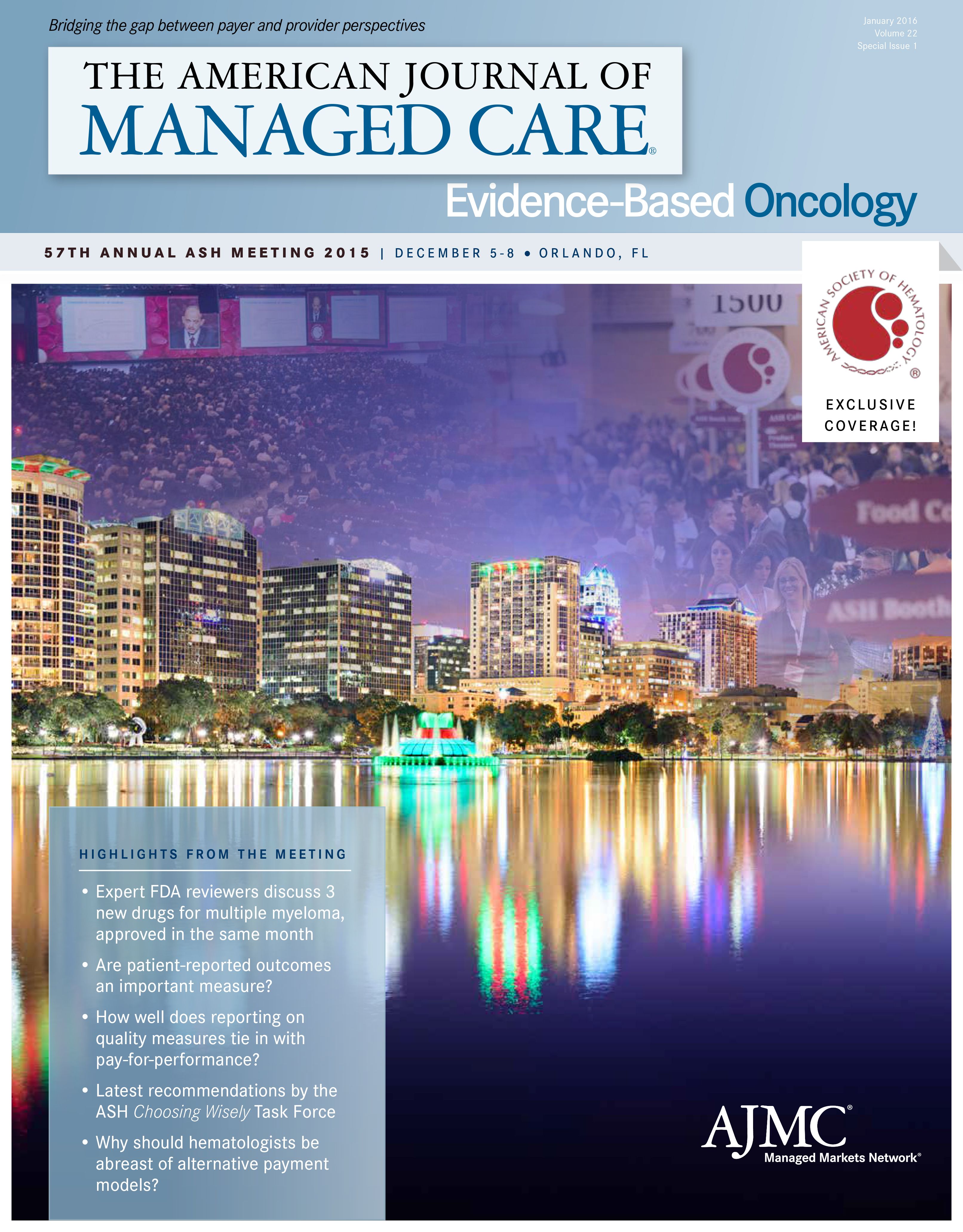- Center on Health Equity & Access
- Clinical
- Health Care Cost
- Health Care Delivery
- Insurance
- Policy
- Technology
- Value-Based Care
Study Shows Academic Hospitals Better at Caring for ALL Patients
A study presented during a health outcomes session at the American Society of Hematology meeting evaluated the difference in overall survival in patients with acute lymphoblastic leukemia treated in academic versus nonacademic hospitals.
During a health outcomes session on the second day of the American Society of Hematology meeting, Roberto A. Ferro, MD, from the University of Nebraska Medical Center, presented study results that evaluated the difference in overall survival (OS) between patients with acute lymphoblastic leukemia (ALL) treated in academic hospitals (AHs) versus nonacademic hospitals (NAHs).
“Considering the complications associated with ALL, multidisciplinary leukemia teams may be needed to provide optimal management and selection of optimal therapeutic strategy for patient care,” Ferro said. Their study was designed to test the hypothesis that AHs are more likely to have such expertise, adequate resources, standard operating policies, and clinical trials, which may influence early mortality and OS in ALL.
To test this hypothesis, the authors used the National Cancer Data Base (NCDB) Participant User File and extracted patient-level data of all patients with ALL reported between 1998 and 2012. Starting with a cohort of more than 20,000 cases, the authors applied certain filtering criteria, such as complete data on variables that included sex, age, education, income, chemotherapy use, 30-day mortality, etc. Patients who received all of their first-course treatment or a decision not to treat made at the reporting facility were included. This narrowed the number of patients in this particular study to 9863.
Ferro said that the hospital facilities were classified as either an AH (academic/research program) or a NAH (community cancer program, comprehensive community cancer program, and other, as per NCDB classification). He explained that per their analysis, 5710 (57.9%) of the 9863 patients with ALL were treated in AHs and that a significantly greater number of patients treated at AHs: • were African American • were uninsured or Medicaid enrollees• had traveled long distances to receive healthcare and a transplant as part of their treatment.
Based on the data shared by Ferro, the median OS (23 vs 17 months) and 1-year OS (67% vs 59%) were better in AH compared with NAH. Further, the 30-day mortality was significantly worse in NAH compared with AH (odds ratio, 1.206; 95% CI, 1.011-1.44; P <.0374).
EBO
“Our data suggest a need for interventions that can help prevent existing disparity between academic versus nonacademic care facilities, at least with respect to care of ALL patients,” Ferro said. He suggested that the OS of patients with ALL can be improved by initiating therapy in an AH, which boasts a better provider experience, enhanced multidisciplinary care, and access to clinical trials, among other factors.

